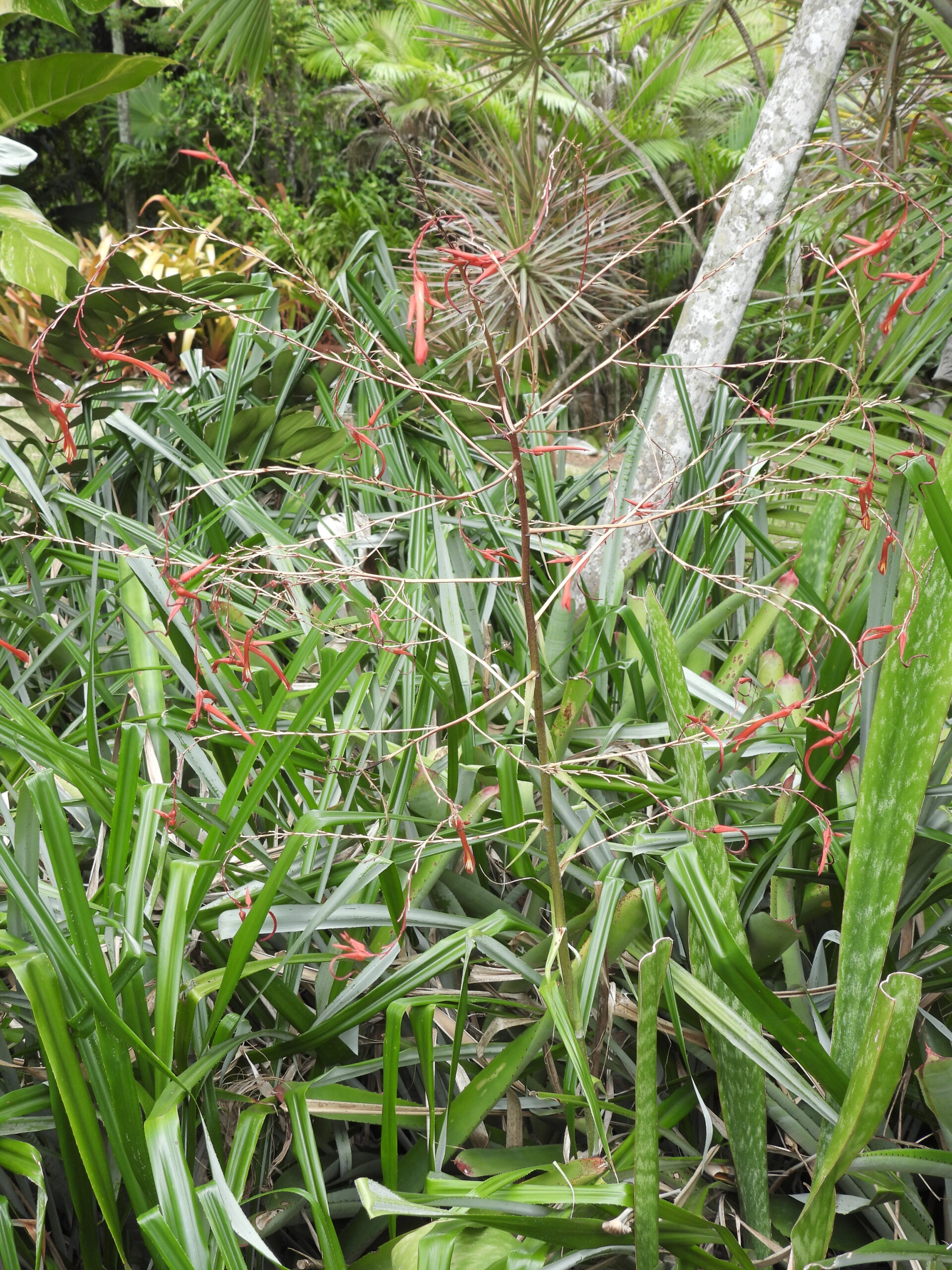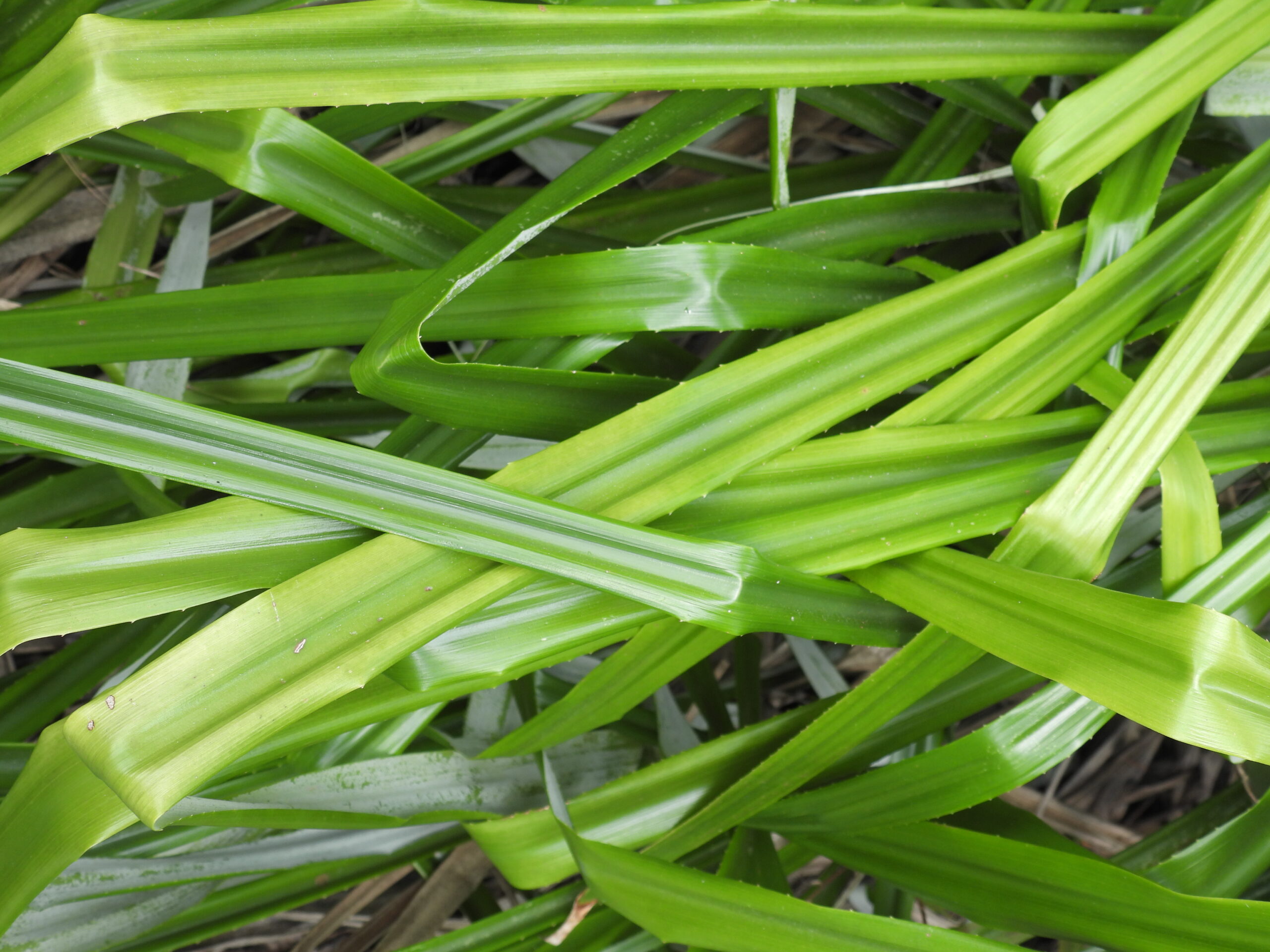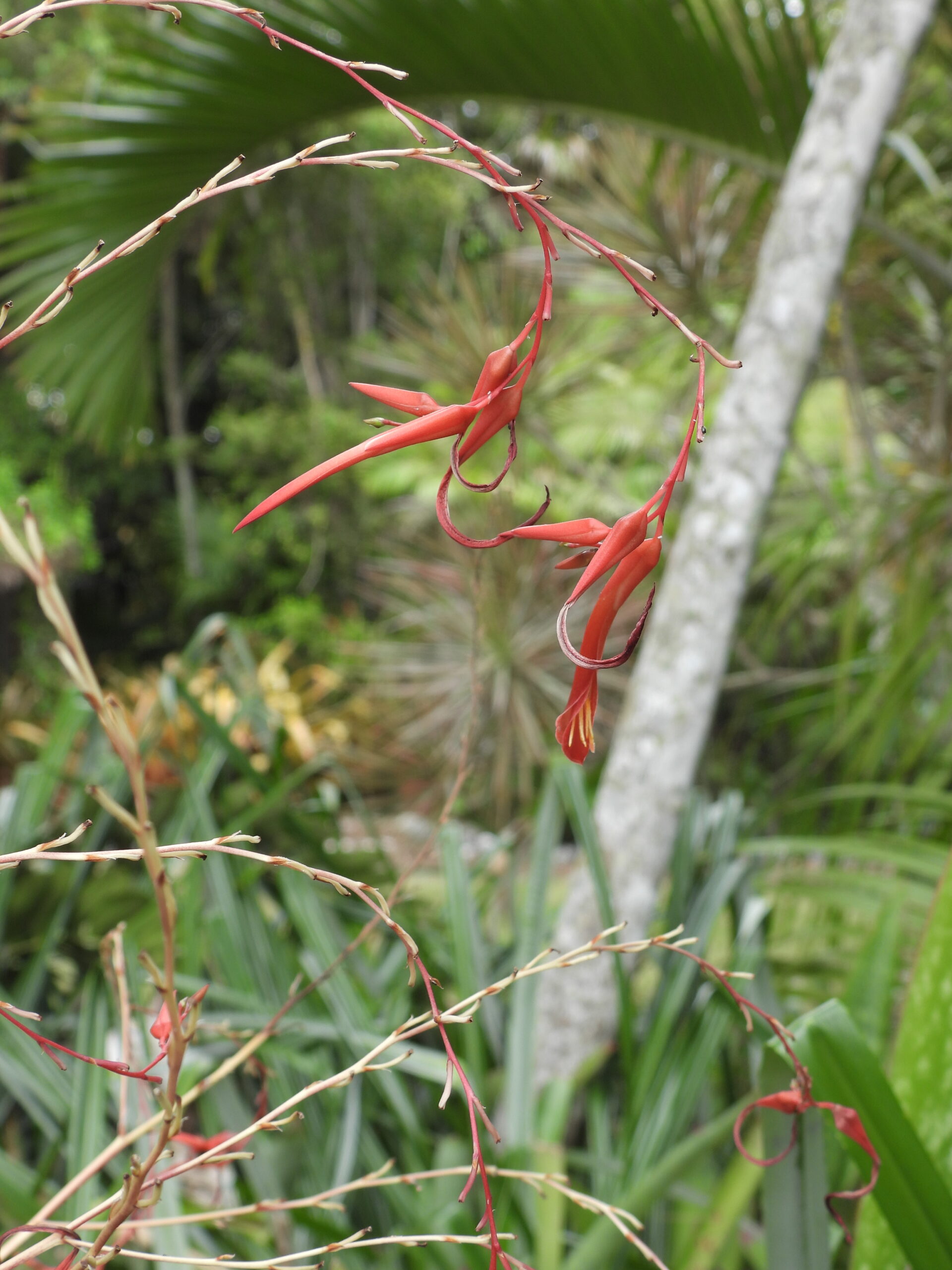Habit: Pitcairnia angustifolia grows without discernible stems up to 1 m (excluding inflorescence) in height, often in clumps from a rhizome. The leaves dark green adaxially organized in a rosette forming a series of cups at their base that can hold water and detritus. The leaves are parallel veined, lanceolate, margin with scattered, short recurved spines up to 3 mm long. The leaves are up to 4 cm wide at their base and up to 2 m in length with a spined leaf apex.
The complete, perfect, slightly zygomorphic flowers, each with a subtending bract, are arranged in an open, lax, panicle to 1.5 m in height/length. The lower bracts below the flowers are bright red colored. The flowers have 3 red fused sepals in the calyx that exceed the length of the bracts. There are 3 red, fused at the base, petals in the corolla that are longer than the calyx. There are 6 stamens that are equal in length and adnate to the petals. The ovary is inferior with 3 locules and numerous seeds. The fruit is a capsule.
Habitat: Pitcairnia angustifolia grows in Human Altered environments (yards and gardens) in the Bahamas. In its native range it is in low elevation Dry Forests.
Distribution: Pitcairnia angustifolia is known to occur in the northern Bahamas. It is native to Puerto Rico and the Lesser Antilles.
Medicinal/Cultural/Economic usage: Pitcairnia angustifolia is not known to be used medicinally in the Bahamas.
Pitcairnia angustifolia is used in the horticultural industry.


